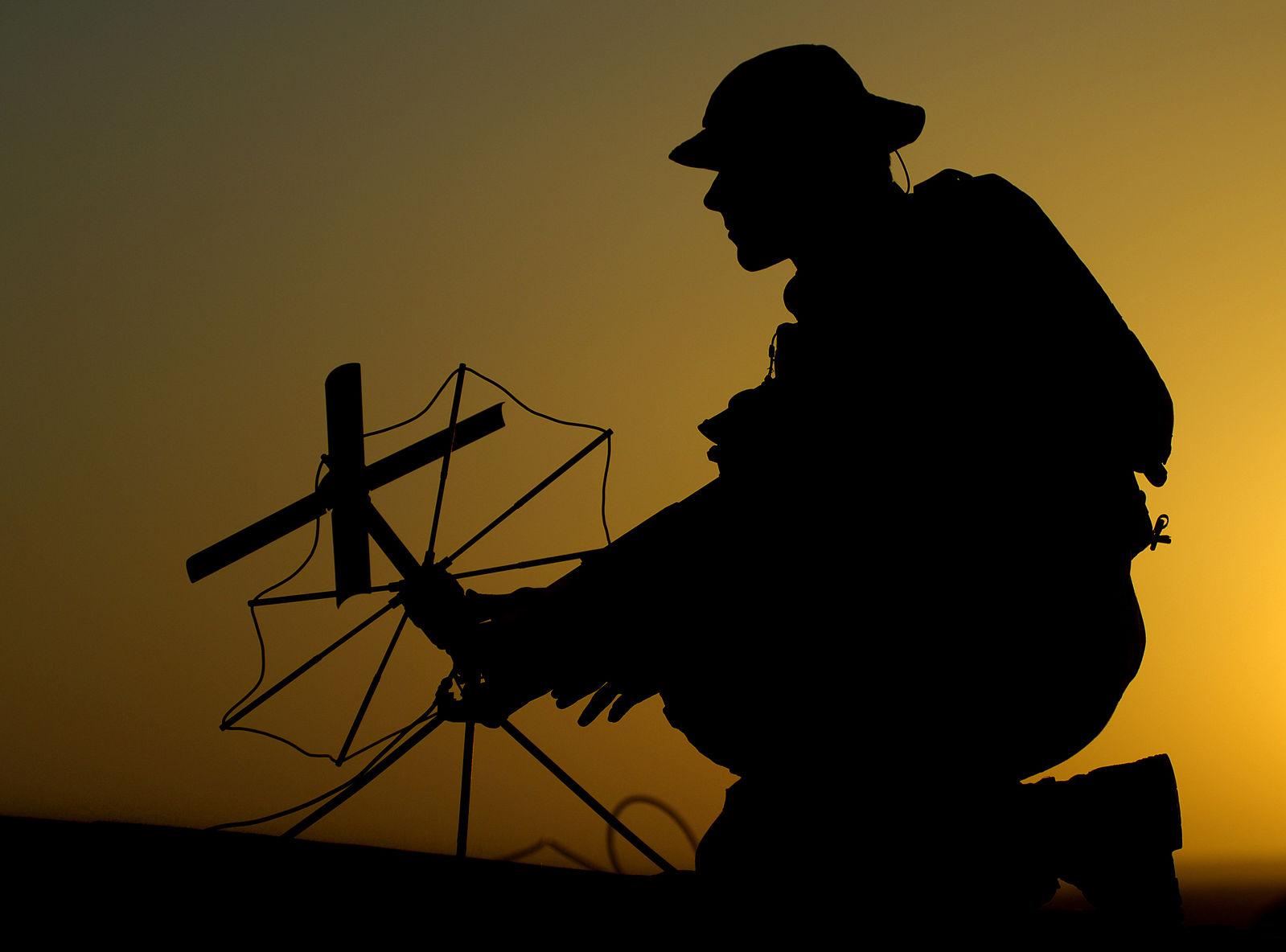Survivability of communication systems has been called into sharp focus given technology advances and their use in contested theatres. It is here that communicators need to balance survivability while still enabling C2 so that land forces can operate securely in a contested and congested electromagnetic spectrum (EMS) environment.
This post focuses on how communications services could be improved to enable C2. This includes removing staff dependence on strategic connectivity, employing deception, camouflage and concealment, utilising modern technology and providing more redundancy. This will enable communicators to increase not only the survivability of units but also enhance the ability for commanders at all levels to win the land battle.
OPERATIONS IN THE MODERN ELECTROMAGNETIC SPECTRUM
Dependence on strategic connectivity
The character of warfare is likely to see a satellite-denied environment, whether it is due to congestion of satellite bands through to overuse, or through enemy actions denying use of the network. To win the land battle in this environment, communicators must be capable of simply supporting friendly force survival against an EW-enabled enemy.
Current issues include an over-reliance by command nodes and headquarters on the employed systems, facilitated by continuous connections with strategic networks. If these systems are not available, land forces are generally not well practiced in how to perform their roles on deployed-only networks. Mitigation includes simulating wideband communications degradation on exercise so that land forces can more easily adapt procedures, strengthening our ability to operate securely in the modern EMS environment.
Deception
Deception can be employed in EMS operations just as it is for manoeuvre operations.[i] This includes using dispersion, spectral camouflage and concealment. Emitters could be dispersed and separated from the node to achieve deception, with the intent to mislead enemy direction finding and reduce the effective impact of massed indirect fires. Further to this, additional research and development could be conducted into spectral-camouflage technology to reduce the unintended radiation from emitters, such as that created by a WiFi network and thermal signatures from vehicles. Any increase in deception generally requires increased effort to enact; however, employing deception and renewing emphasis on camouflage and concealment will greatly increase survivability in a modern conventional war.
Technology
Embracing modern communications technology may help reduce the chance of detection and intercept. Platform limitations sometimes see outdated modes of communication used with units defaulting to legacy voice communication methods on exercise. For voice communications, the hardware currently employed is suitable. In the Very High Frequency (VHF) spectrum, Single Channel Ground and Airborne Radio System (SINCGARS) provides improved security by frequency hopping at a sufficient rate, lowering the chance of intercept.
Utilising the High Frequency (HF) spectrum, while not as user friendly, can provide an advantage for local tactical voice communications by employing HF Near Vertical Incidence Skywave (NVIS). NVIS uses a horizontal antenna which radiates most of its energy upwards, providing communication out to maybe 500km and does not have a skip zone so long as the antenna is established correctly. Utilising NVIS significantly degrades the enemy’s ability to detect, intercept and direction find the radiating source as minimal energy is radiated sideways.[ii] Further to general HF propagation principles, there are modes which can be employed with modern radios to reduce the probability of detection and intercept further by utilising frequency hopping.[iii] These modern technologies should be employed with alternate and sometimes tertiary systems to ensure redundant communications, whilst weighing up against deception requirements.
Redundancy
There is focus on communication redundancy in Battle Group and below space; however, greater consideration is needed for bearers out of the brigade’s area of operation due to current dependency on wideband Satellite Communication (SATCOM). Communication planners may claim redundancy by using a military satellite constellation as a primary bearer and a commercial constellation as an alternate, but these are both SATCOM and are both susceptible to similar threats from both the enemy and congestion of the spectrum.
In regards to terrestrial communications as a bearer, western armies could consider using local mobile communications network or the wired telephone network. To add further redundancy, the use of the HF spectrum for data could be factored into plans, allowing essential circuits at a restricted throughput, but with long-range HF being more difficult to detect, intercept and direction find. Lastly, line of site and tropospheric scatter wideband bearers could be employed in the local AO between nodes, providing a secure backbone utilising directional antennas.
CONCLUSION
Communicators should renew their focus on deception, embrace new technology designed to lower the probability of detection and intercept and ensure redundancy. These concepts seem to pull against each other but must be weighed up to best find a balance between physical survivability and C2. Ultimately, the best way to practice and test this is by having forces conduct training and evaluation in a true communications-denied environment.
About the author
Captain Jacob Marshall is a signals corps officer. He has a Bachelor in Information Technology and is studying a Master of Engineering Science. He has been posted to units in both 1 and 3 Brigades.
Endnotes
[i] It is noted that a US Army Brigade has ten times more electronic and communications assets than a Russian-style Brigade. Karber, P., 2016, Lessons learned from the Russo-Ukraine war, Briefing for Supreme Allied Commander Europe.
[ii] Frater, M., Ryan, M., 2001, Electronic warfare on the digitized battlefield, Aztec House
[iii] Harris Corporation, 2010, AN/PRC-150(C) Falcon II manpack radio applications handbook, Melbourne Florida

